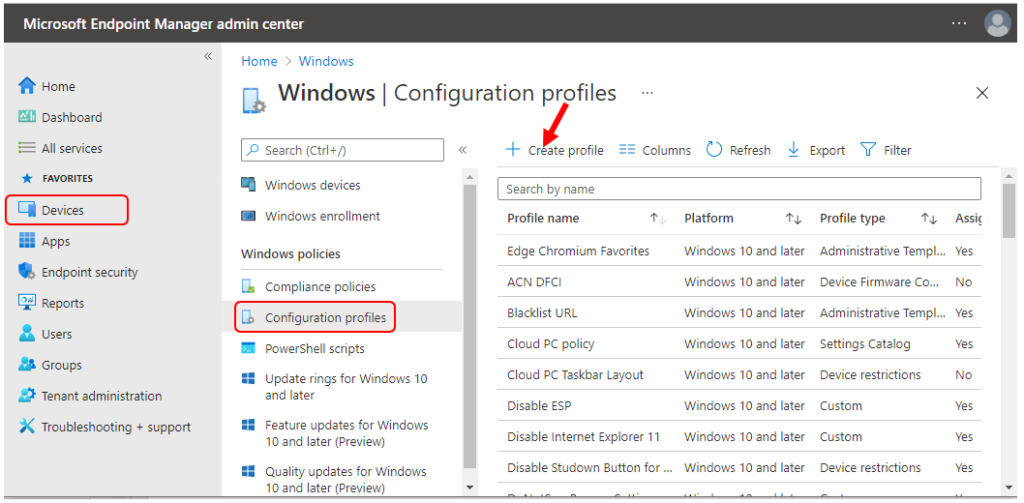In this post, you will learn how to Enable Microsoft Edge Sleeping Tabs using Intune. Sleeping tabs are built on the core of Chromium’s “freezing” technology (which pauses a tab’s script timers to minimize resource usage) to create sleeping tabs. Sleeping tabs allow inactive background tabs to “go to sleep”, releasing system resources (memory and CPU) after a set amount of time for other tabs or applications running on your device.
Microsoft introduced sleeping tabs in Microsoft Edge Chromium to improve the memory and CPU usage of the browser. It typically increases battery life as a sleeping tab uses 26% less CPU on average compared to a non-sleeping tab. It also reduces memory usage by 16% on average.
Your overall savings with sleeping tabs will vary based upon your browser usage and the total number of tabs you use. You can learn more about how to Enable Microsoft Edge Sleeping Tabs in Windows 10/ Windows 11.
Enable Microsoft Edge Sleeping Tabs using Intune
Let’s follow the below steps to Enable Microsoft Edge Sleeping Tabs using Intune –
- Sign in to the Microsoft Endpoint Manager admin center
- Select Devices > Windows > Configuration profiles > Create profile.

In Create Profile, Select Platform, Windows 10, and later and Profile, Select Settings catalog (preview). Click on Create button.

On the Basics tab, enter a descriptive name, such as Enable Microsoft Edge Sleeping Tabs. Optionally, enter a Description for the policy, then select Next.

In Configuration settings, select Add settings.

Select Microsoft Edge > Sleeping Tabs settings to see all the settings in this category. After adding your settings, click the cross mark at the right-hand corner to close the settings picker. Here, I selected Configure Sleeping Tabs and Set the background tab inactivity timeout for Sleeping Tab option below –

All the settings are shown and configured with a default value. If you don’t want to configure a setting, then select the minus.
- Set Configure Sleeping Tabs to Enabled
- Set the background tab inactivity timeout for Sleeping Tab to Enabled
- Set the background tab inactivity timeout for Sleeping Tab (Device) – By deafult, this option will select 5 minutes of inactivity, Here I have configured to 15 minutes of inactivity.

Under Assignments, In Included groups, select Add groups and then choose Select groups to include one or more groups. Select Next to continue.

In Scope tags, you can assign a tag to filter the profile to specific IT groups. Add scope tags (if required) and click Next.
In Review + create, review your settings. When you select Create, your changes are saved, and the profile is assigned.

A notification will appear automatically in the top right-hand corner with a message. Here you can see, Policy “Enable Microsoft Edge Sleeping Tabs” created successfully. The policy is also shown in the Configuration profiles list.

Your groups will receive your profile settings when the devices check-in with the Intune service.
Once the policy applies to the devices, inactive tabs in Edge Chromium Browser will go to sleep after a specified time to save your computer resources.
Author
About Author -> Jitesh has over 5 years of working experience in the IT Industry. He writes and shares his experiences related to Microsoft device management technologies and IT Infrastructure management. His primary focus area is Windows 10 Deployment solution with Configuration Manager, Microsoft Deployment Toolkit (MDT), and Microsoft Intune.
